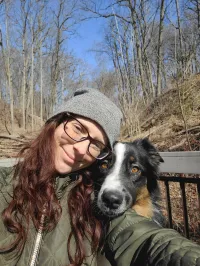Advice, Inspiration, and Experience Shares
Explore blog articles written by a certified trainer
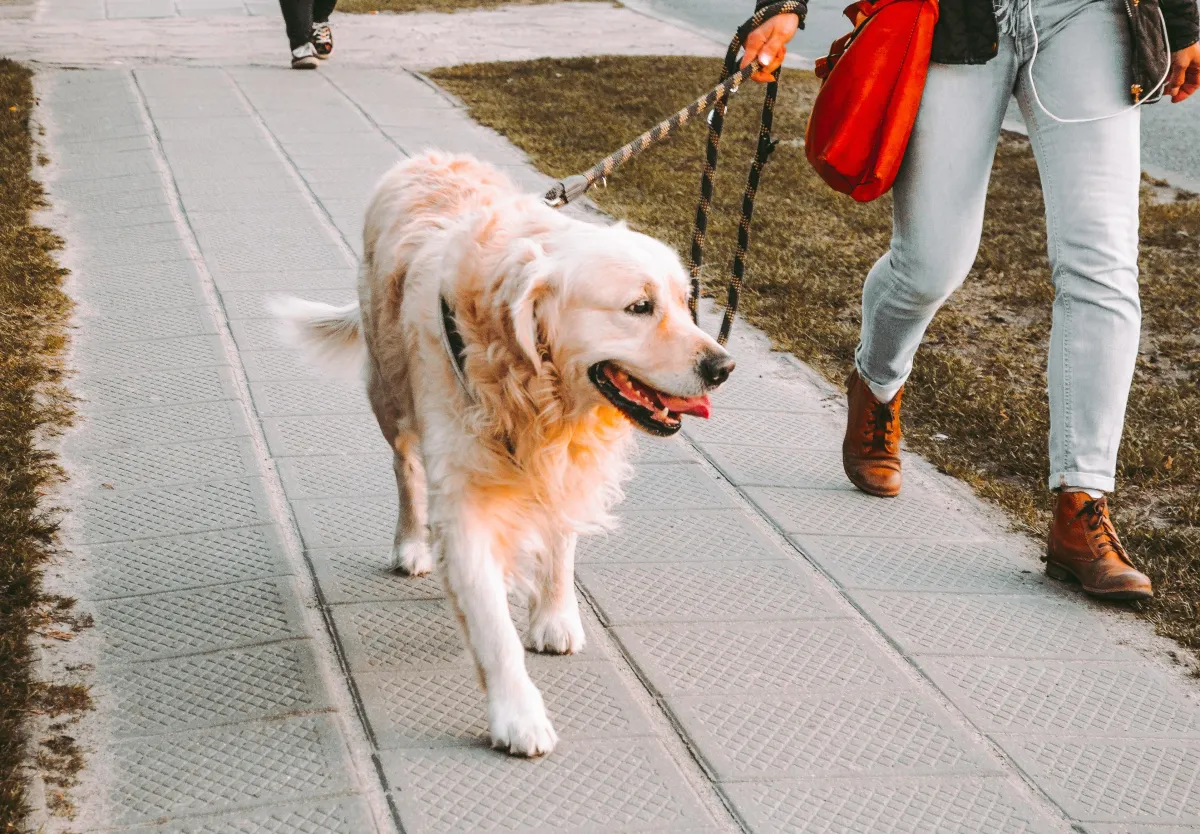
How to Walk Your Dog
You daydreamed about relaxing neighbourhood walks, restorative forest hikes , and quiet moments along the boardwalk with your dog. Then you realized that they didn't come pre-loaded with that particular software. Actually, they may even have some malware...
I don't really think, I just walk”
- Paris Hilton

Tip #1: Allow natural exploratory behaviours
Imagine you lived in a universe where you didn't know when your next meal was coming. You would constantly be on the lookout and searching for food. Now in the opposite universe, you have access to food very frequently, and never have to worry that there won't be more. Your exploratory and investigative behaviours would be almost non-existent!
Contrary to what you may think is good practice, allow your dog indulge in their innate need to seek and investigate! You just may see that pulling towards good smells and things to look at happens less frequently, and is less intense. This is called satiation - feeling like your needs/wants have been satisfied.
You can start encouraging this slower, more investigative walk by modelling it! Say "What's this?" and stop to touch, smell, look at something. Your dog will likely copy your behaviours. Drop some treats in the spot before your dog comes over to make it an extra rewarding experience to stop and smell the flowers. Over time, you might notice your dog initiating more stopping and sniffing, which means... less pulling!
You may also want to try using a longer leash. The "long leash" used in this study was 5 meters (about 15 feet). Sniffing reduces heart rate (Ma et al., 2017), which in turn reduces cortisol levels (Sean Knurek, 2022). Higher cortisol means impaired memory and thinking, and, if levels are high enough, an increase in "fight or flight" behaviours (which often gets labelled as hyperactive or hypervigilant). So #LetThemSniff
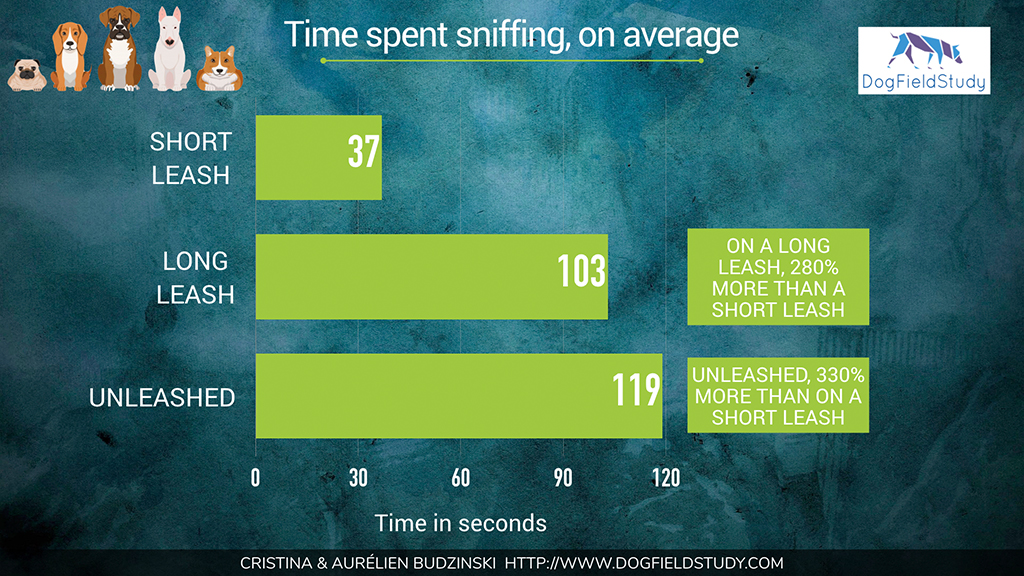
Tip #2: Learn how to dance.
I worked with a lovely couple in Toronto that were having issues going for a walk with their dog, Jack. Jack was a pre-teen when I started working with them. Remember being 10 years old? Climbing trees, rough-housing, testing physical boundaries and exploring? Our dogs also go through this!
I told Jack's parents that I was going to teach them to dance with their dog; if you can show your dog that you can read and respond to their movements, you'll see them returning the favour. Dancing is a partnership that works because each partner reads and responds to the other's movements; if they don't, somebody gets stepped on.
Being engaged in watching your dog so that you can respond will help reduce your frustration on your walks. If you can see your dog is about to hit the end of the leash, you can smoothly slow down and get the dance back on track. And ditch the straight line! Moving in a straight line is boring. Watch enough dogs roaming off-leash, and you will rarely see dogs walking in a straight line. The only time I can think of dogs walking in a straight line when I was a dog walker was at the end of the walk and their needs had been met. I strongly suspect that allowing natural movement vs repetitive movement (zig-zag walking vs. straight line walking) has a positive effect on the mental wellbeing of our animals. Think Phoebe teaching Rachael how to run free.
Calling all scientists: somebody please research this!!
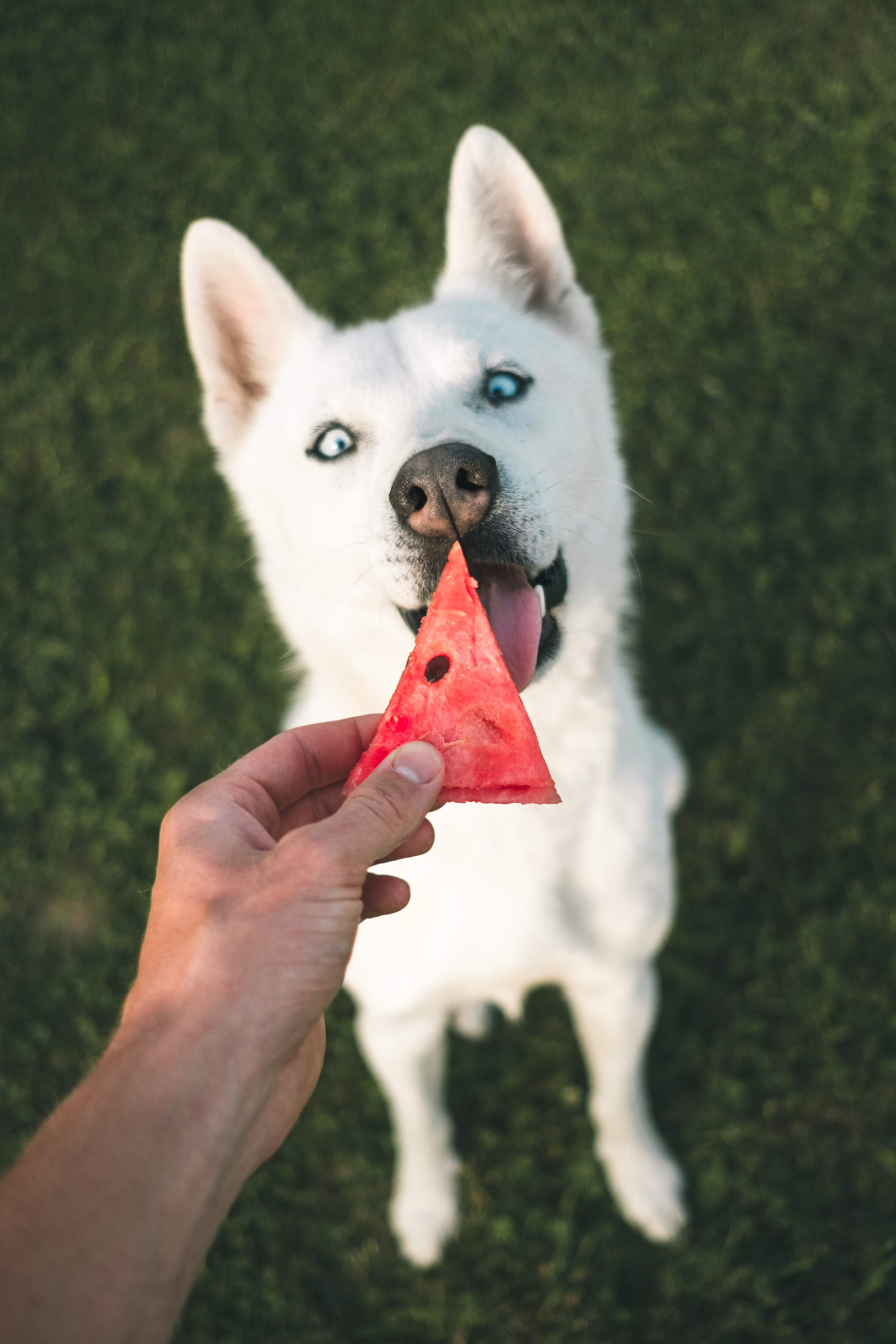
Tip #3: Don't expect something for nothing.
Why should your dog walk on a loose leash with you? What's in it for them? I'll tell you right now I certainly don't go in to work just to earn praise and pats on the head. Yet we ask our dogs to work for free constantly. I get that you don't want to have to always have treats on you. Humans are greedy (that's not the secret). We always want more, and feel slighted when we don't get a raise. Dogs, being the angels they are, will work for less and less.
I've told most students who have come through my classes "Don't you dare start your dog out at minimum wage for a premium job. Your dog is making 100K this year. Then we can start 'lowering their pay'." This works because dogs don't have greed. The more you reinforce a behaviour, the more inherently reinforcing that behaviour becomes. It's like you going into work and over time meaning it when you say "I don't work for the money".
Evolutionarily, expending energy and getting nothing out of it is bad news. Animals that waste energy get to death quickly. You're fighting against evolution when you say "my dog should walk next to me because they want to". Sorry mate, but to quote Shania Twain "Oh, oh, you think you're special. Oh, oh, you think you're something else. That don't impress me much".
Tip #4: Dogs have hormones too - cut them some slack.
"Testosterone in males starts to increase at 4-5 months of age and continues until 10-11 months, then starts to decrease until it reaches the adult balance at around 18 months of age. Females have an increase in testosterone around the same age, as well as an increase in estradiol. Testosterone can lead to more sensation seeking behaviors and higher sensitivity for external rewards in both males and females. It can also lead to higher proactive aggression in males. Estradiol seems to lead to an increase in risk taking behaviors and decreased inhibition."
Read the whole article here: Adolecence-in-Dogs.pdf (mountainhumane.org)
No way! Teenage-hood brings on a desire to explore and experience things? I can't think of a single other species that goes through that...
Here comes evolution again, encouraging the exact opposite of what you would like. So cut yourself, and them, some slack while you work through this period. Get your dancing pants on, and get your favourite treat pouch and treats ready so you can catch moments of loose leash walking when they do happen.
To sit with a dog on a hillside on a glorious afternoon is to be back in Eden, where doing nothing was not boring - it was peace.
- Milan Kundera
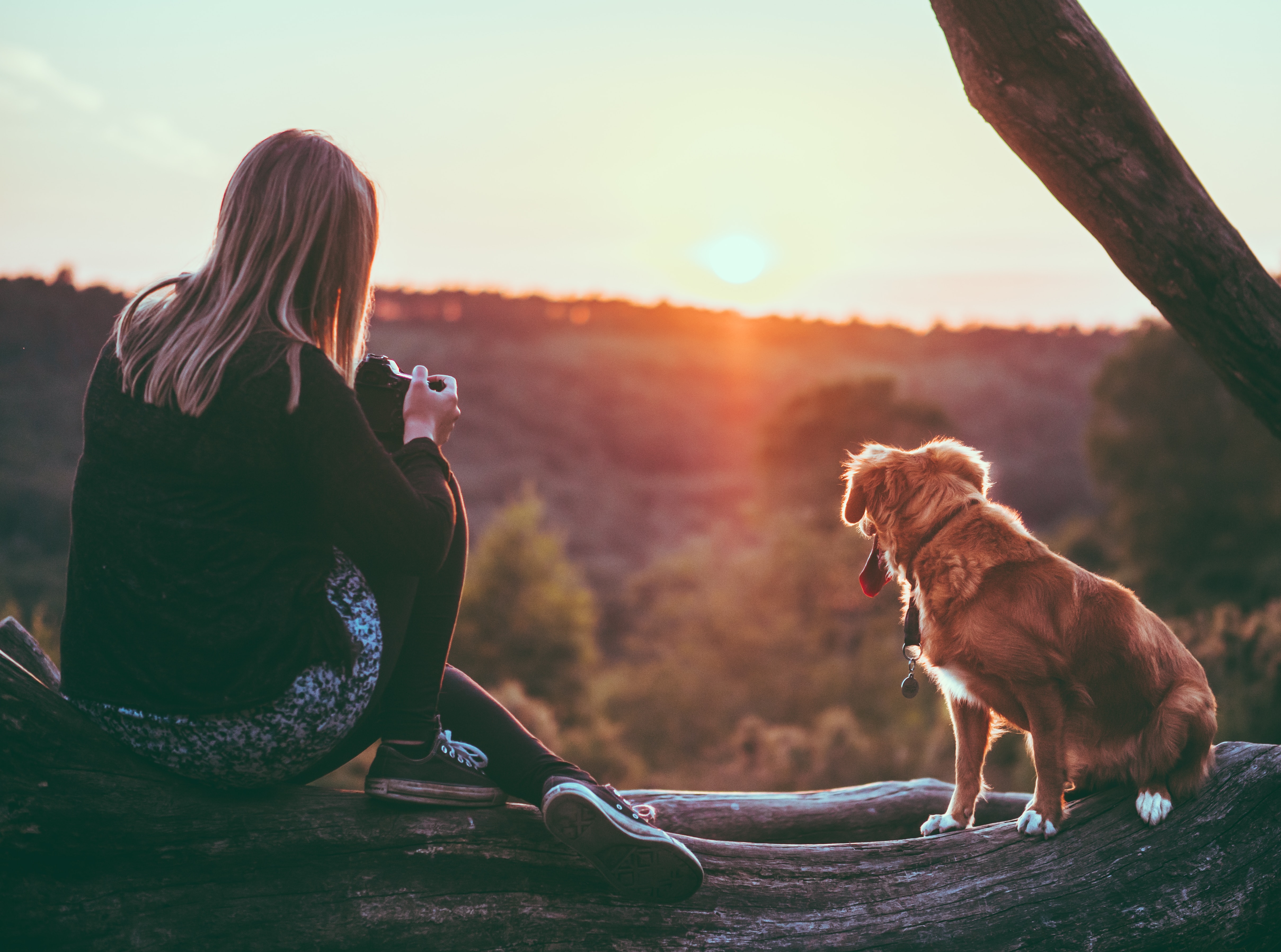
Looking for personalized advice?
Book a 30 min call to get your questions answered!

How to Walk Your Dog
You daydreamed about relaxing neighbourhood walks, restorative forest hikes , and quiet moments along the boardwalk with your dog. Then you realized that they didn't come pre-loaded with that particular software. Actually, they may even have some malware...
I don't really think, I just walk”
- Paris Hilton

Tip #1: Allow natural exploratory behaviours
Imagine you lived in a universe where you didn't know when your next meal was coming. You would constantly be on the lookout and searching for food. Now in the opposite universe, you have access to food very frequently, and never have to worry that there won't be more. Your exploratory and investigative behaviours would be almost non-existent!
Contrary to what you may think is good practice, allow your dog indulge in their innate need to seek and investigate! You just may see that pulling towards good smells and things to look at happens less frequently, and is less intense. This is called satiation - feeling like your needs/wants have been satisfied.
You can start encouraging this slower, more investigative walk by modelling it! Say "What's this?" and stop to touch, smell, look at something. Your dog will likely copy your behaviours. Drop some treats in the spot before your dog comes over to make it an extra rewarding experience to stop and smell the flowers. Over time, you might notice your dog initiating more stopping and sniffing, which means... less pulling!
You may also want to try using a longer leash. The "long leash" used in this study was 5 meters (about 15 feet). Sniffing reduces heart rate (Ma et al., 2017), which in turn reduces cortisol levels (Sean Knurek, 2022). Higher cortisol means impaired memory and thinking, and, if levels are high enough, an increase in "fight or flight" behaviours (which often gets labelled as hyperactive or hypervigilant). So #LetThemSniff

Tip #2: Learn how to dance.
I worked with a lovely couple in Toronto that were having issues going for a walk with their dog, Jack. Jack was a pre-teen when I started working with them. Remember being 10 years old? Climbing trees, rough-housing, testing physical boundaries and exploring? Our dogs also go through this!
I told Jack's parents that I was going to teach them to dance with their dog; if you can show your dog that you can read and respond to their movements, you'll see them returning the favour. Dancing is a partnership that works because each partner reads and responds to the other's movements; if they don't, somebody gets stepped on.
Being engaged in watching your dog so that you can respond will help reduce your frustration on your walks. If you can see your dog is about to hit the end of the leash, you can smoothly slow down and get the dance back on track. And ditch the straight line! Moving in a straight line is boring. Watch enough dogs roaming off-leash, and you will rarely see dogs walking in a straight line. The only time I can think of dogs walking in a straight line when I was a dog walker was at the end of the walk and their needs had been met. I strongly suspect that allowing natural movement vs repetitive movement (zig-zag walking vs. straight line walking) has a positive effect on the mental wellbeing of our animals. Think Phoebe teaching Rachael how to run free.
Calling all scientists: somebody please research this!!

Tip #3: Don't expect something for nothing.
Why should your dog walk on a loose leash with you? What's in it for them? I'll tell you right now I certainly don't go in to work just to earn praise and pats on the head. Yet we ask our dogs to work for free constantly. I get that you don't want to have to always have treats on you. Humans are greedy (that's not the secret). We always want more, and feel slighted when we don't get a raise. Dogs, being the angels they are, will work for less and less.
I've told most students who have come through my classes "Don't you dare start your dog out at minimum wage for a premium job. Your dog is making 100K this year. Then we can start 'lowering their pay'." This works because dogs don't have greed. The more you reinforce a behaviour, the more inherently reinforcing that behaviour becomes. It's like you going into work and over time meaning it when you say "I don't work for the money".
Evolutionarily, expending energy and getting nothing out of it is bad news. Animals that waste energy get to death quickly. You're fighting against evolution when you say "my dog should walk next to me because they want to". Sorry mate, but to quote Shania Twain "Oh, oh, you think you're special. Oh, oh, you think you're something else. That don't impress me much".
Tip #4: Dogs have hormones too - cut them some slack.
"Testosterone in males starts to increase at 4-5 months of age and continues until 10-11 months, then starts to decrease until it reaches the adult balance at around 18 months of age. Females have an increase in testosterone around the same age, as well as an increase in estradiol. Testosterone can lead to more sensation seeking behaviors and higher sensitivity for external rewards in both males and females. It can also lead to higher proactive aggression in males. Estradiol seems to lead to an increase in risk taking behaviors and decreased inhibition."
Read the whole article here: Adolecence-in-Dogs.pdf (mountainhumane.org)
No way! Teenage-hood brings on a desire to explore and experience things? I can't think of a single other species that goes through that...
Here comes evolution again, encouraging the exact opposite of what you would like. So cut yourself, and them, some slack while you work through this period. Get your dancing pants on, and get your favourite treat pouch and treats ready so you can catch moments of loose leash walking when they do happen.
To sit with a dog on a hillside on a glorious afternoon is to be back in Eden, where doing nothing was not boring - it was peace.
- Milan Kundera






